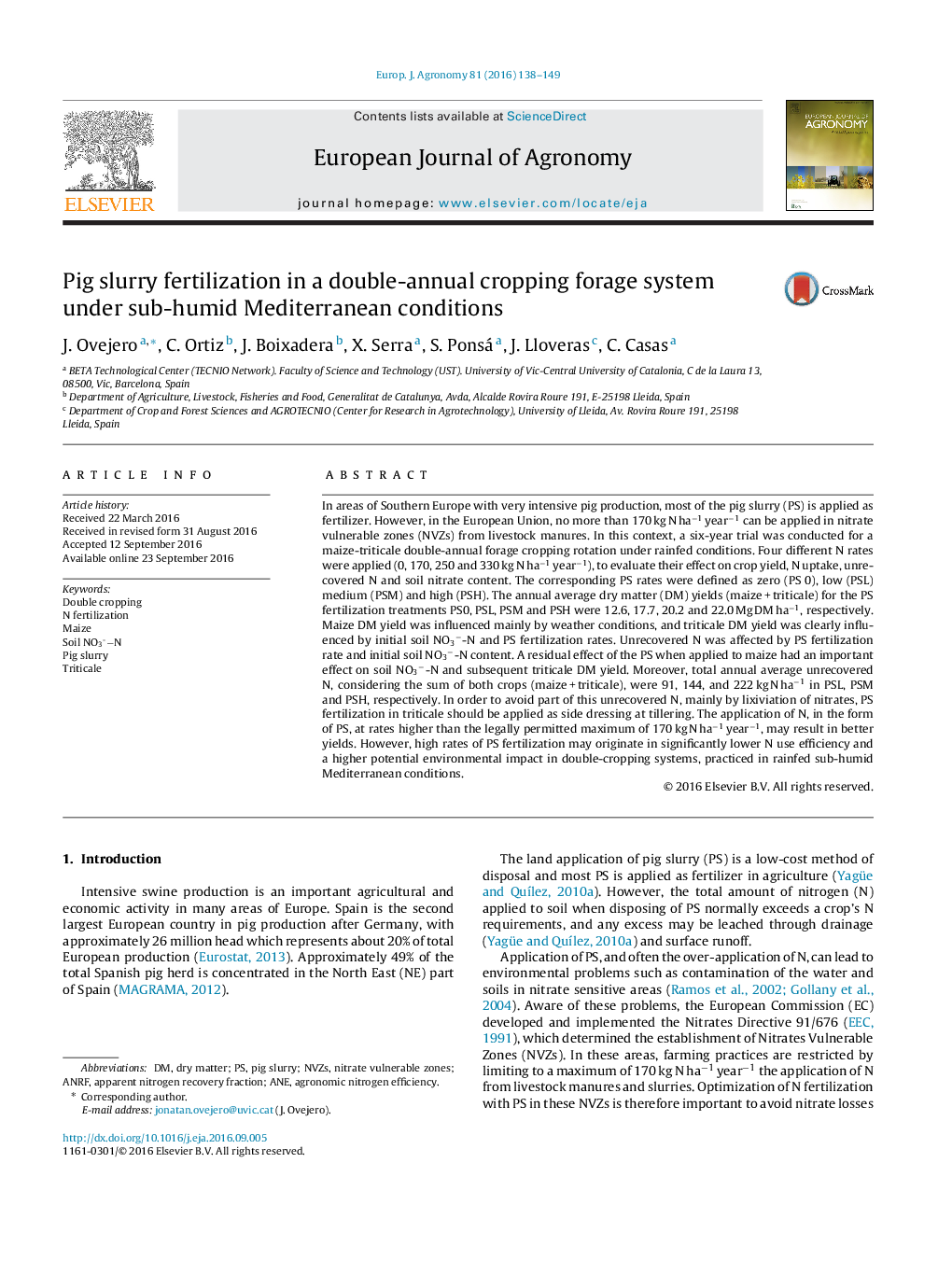| کد مقاله | کد نشریه | سال انتشار | مقاله انگلیسی | نسخه تمام متن |
|---|---|---|---|---|
| 4508664 | 1624444 | 2016 | 12 صفحه PDF | دانلود رایگان |
• Effects of pig slurry application were studied in a maize-triticale double-annual rotation.
• High pig slurry rates may result in better yields but higher environmental impact.
• At maize sowing time, pig slurry applications led a residual N effect.
• Unrecovered N were affected by pig slurry rate and by initial soil NO3−-N content.
• Is suggested to apply pig slurry at triticale tillering to reduce N lixiviation.
In areas of Southern Europe with very intensive pig production, most of the pig slurry (PS) is applied as fertilizer. However, in the European Union, no more than 170 kg N ha−1 year−1 can be applied in nitrate vulnerable zones (NVZs) from livestock manures. In this context, a six-year trial was conducted for a maize-triticale double-annual forage cropping rotation under rainfed conditions. Four different N rates were applied (0, 170, 250 and 330 kg N ha−1 year−1), to evaluate their effect on crop yield, N uptake, unrecovered N and soil nitrate content. The corresponding PS rates were defined as zero (PS 0), low (PSL) medium (PSM) and high (PSH). The annual average dry matter (DM) yields (maize + triticale) for the PS fertilization treatments PS0, PSL, PSM and PSH were 12.6, 17.7, 20.2 and 22.0 Mg DM ha−1, respectively. Maize DM yield was influenced mainly by weather conditions, and triticale DM yield was clearly influenced by initial soil NO3−-N and PS fertilization rates. Unrecovered N was affected by PS fertilization rate and initial soil NO3−-N content. A residual effect of the PS when applied to maize had an important effect on soil NO3−-N and subsequent triticale DM yield. Moreover, total annual average unrecovered N, considering the sum of both crops (maize + triticale), were 91, 144, and 222 kg N ha−1 in PSL, PSM and PSH, respectively. In order to avoid part of this unrecovered N, mainly by lixiviation of nitrates, PS fertilization in triticale should be applied as side dressing at tillering. The application of N, in the form of PS, at rates higher than the legally permitted maximum of 170 kg N ha−1 year−1, may result in better yields. However, high rates of PS fertilization may originate in significantly lower N use efficiency and a higher potential environmental impact in double-cropping systems, practiced in rainfed sub-humid Mediterranean conditions.
Journal: European Journal of Agronomy - Volume 81, November 2016, Pages 138–149
